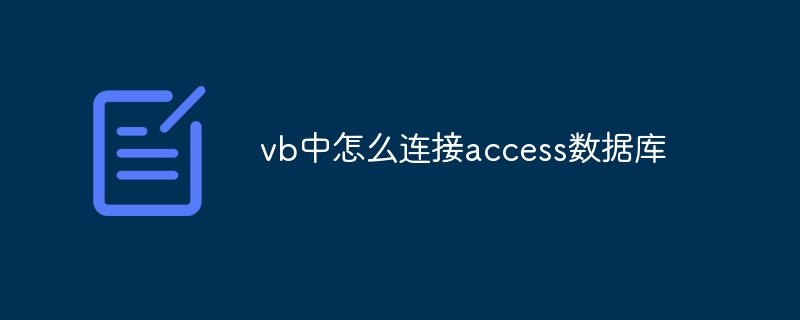ODBC stands for Open Database Connectivity The Microsoft Open Database Connectivity (ODBC) interface is a C programming language interface that allows applications to access data from a variety of Database Management Systems (DBMS). a set
ODBC stands for Open Database Connectivity
The Microsoft Open Database Connectivity (ODBC) interface is a C programming language interface that allows applications to access data from a variety of Database Management Systems (DBMS).
a set of functions
a means of accessing several databases in different formats
supports both 16-bit and 32-bit APIs,
several performance-boosting techniques- connection pooling
The set of API functions is complex, relatively few programmers write applications that directly call ODBC functions
DSN
A DSN is a set of values that an application needs to correctly connect to a database.
ODBC driver
machine the application runs on connects to a DLL called the ODBC Driver Manager, which in turn sends commands to (and retrieves data from) an ODBC driver specific to the particular database you want to use.
DAO
Data control.
This control lets you bind one or more controls on a form to a data source and offers buttons for navigating through the records of the database table you've connected to.
3-tier
3-tier (or n-tier) architectures, where one or more intermediate layers between the application and the database provide services such as data validation, business rules, workload balance, and security. Alas, if you want to embrace the n-tier philosophy, you should forget about the Data control.
you can use one or more intermediate COM components, which consistently implement a more flexible 3-tier design.
RDO
combine the simplicity of DAO with the power of direct ODBC API programming.
bypasses the Jet Engine and the DAO DLL and works directly
resource-hungry Jet engine.
OLE DB
eventually replace ODBC as the primary means for connecting to databases.
counterpart to ODBC drivers are the OLE DB providers
OLE DB is based on COM, an architecture that has proven robust enough to move large quantities of data across the network.
any type of data source, not just relational and ISAM (indexed sequential access mode) databases
OLE DB is a comprehensive set of COM interfaces for accessing a diverse range of data in a variety of data stores.
OLE DB providers exist for accessing data in databases, file systems, message stores, directory services, workflow, and document stores.
ADO
ADO is the high-level interface to OLE DB. It fills more or less the same role that RDO does for the ODBC APIs.
Like ODBC APIs, OLE DB is a low-level interface that can't be easily (or at all) accessed from high-level languages such as Visual Basic.
ADO is probably its extensibility.
New features can be added to ADO in the form of special OLE DB providers, such as the MSDataShape provider
One ADO subsystem, named Remote Data Services, even lets you send a bunch of records to a client browser or activate COM components remotely over the Internet.
ADO Data Binding
binding is a technology that lets you place controls—such as TextBox, CheckBox, ListBox, and ComboBox controls—on a form and bind any or all of them to another control, called the Data control, which in turn is connected to a database.
ADO Data controls & data consumers
instead of Data controls, you should talk about one or more data consumers that are bound to a data source.
In Visual Basic 6, you can use many types of data consumers, such as an intrinsic or external control, a class, a COM component, a homemade ActiveX control (or UserControl), or the DataReport designer.
You also have many data sources to choose from: the ADO Data control, a class, a COM component, a UserControl, or the DataEnvironment designer.
In the Visual Basic 6 package, you'll also find some external ActiveX controls that support data binding, such as the ImageCombo, MonthView, DateTimePicker, MaskEdBox, RichTextBox, DataGrid, DataList, DataCombo, and Hierarchical FlexGrid controls.
data-aware ActiveX controls
DataEnvironment designer : form designer = ADO objects : forms and controls
When you use a form designer, you're actually defining at design time the forms and controls Visual Basic will create at run time. You make your choices in a visual manner, without worrying about what Visual Basic actually does when the program runs. Similarly, you can use the DataEnvironment designer to define the behavior of ADO Connections, Commands, and Recordset objects. You can set their properties at design time by pressing the F4 key to bring up the Properties window or by using their custom property pages, exactly as you would do with forms and controls.
In short, it's a design-time representation of the ADO objects that you would otherwise create at run time.
SQL SERVER 登录用户与系统服务帐户的区别
实例何用
 access如何设置验证规则Apr 10, 2024 am 10:59 AM
access如何设置验证规则Apr 10, 2024 am 10:59 AMAccess 验证规则是一种数据验证工具,用于确保数据符合特定条件,防止输入无效数据。设置验证规则的步骤:1. 选择要设置验证规则的字段;2. 打开“字段属性”对话框并切换到“查找”选项卡;3. 在“验证规则”字段中输入验证规则;4. 在“验证文本”字段中输入不符合规则时的错误消息;5. 单击“确定”保存更改。
 microsoft access是什么软件Mar 03, 2023 am 11:37 AM
microsoft access是什么软件Mar 03, 2023 am 11:37 AMmicrosoft access是由微软发布的关系数据库管理系统;它结合了MicrosoftJet Database Engine和图形用户界面两项特点,是Microsoft Office的系统程序之一。
 access数据库的扩展名是什么Apr 10, 2024 am 11:10 AM
access数据库的扩展名是什么Apr 10, 2024 am 11:10 AMAccess 数据库文件的扩展名为 .accdb,自 Microsoft Access 2007 起开始使用,用于识别包含结构化数据的容器文件,如表、查询和窗体。
 access和trunk端口的区别是什么Oct 31, 2023 pm 05:59 PM
access和trunk端口的区别是什么Oct 31, 2023 pm 05:59 PMaccess和trunk端口的区别:1、Access端口用于连接终端设备,提供单个VLAN的接入,而Trunk端口用于连接交换机之间,提供多个VLAN的传输;2、Access端口只传输属于指定VLAN的数据,而Trunk端口可以传输多个VLAN的数据,并使用VLAN标签进行区分。
 access数据库有什么功能Apr 10, 2024 pm 12:29 PM
access数据库有什么功能Apr 10, 2024 pm 12:29 PMMicrosoft Access 是一款用于创建、管理和查询数据库的关系型数据库管理系统,提供以下功能:数据存储和管理数据查询和检索表单和报表创建数据分析和可视化关系数据库管理自动化和宏多用户支持数据库安全可移植性
 access是什么软件Apr 10, 2024 am 10:55 AM
access是什么软件Apr 10, 2024 am 10:55 AMMicrosoft Access 是一款关系型数据库管理系统 (RDBMS),用于存储、管理和分析数据。它主要用于数据管理、导入/导出、查询/报表生成、用户界面设计和应用程序开发。Access 优势包括易用性、集成数据库管理、强大灵活、与 Office 集成和可扩展性。
 vb中怎么连接access数据库Oct 09, 2023 am 11:38 AM
vb中怎么连接access数据库Oct 09, 2023 am 11:38 AMvb中连接access数据库的步骤包括引用必要的命名空间、创建连接字符串、创建连接对象、打开连接、执行SQL语句和关闭连接。详细介绍:1、引用必要的命名空间,在VB项目中,首先需要引用“System.Data`和`Microsoft.Office.Interop.Access”命名空间,以便使用ADO.NET和Access相关的类和方法,可以在VB项目的引用中添加这些命名等等。
 access数据库有几种数据类型Apr 10, 2024 pm 12:17 PM
access数据库有几种数据类型Apr 10, 2024 pm 12:17 PMAccess 数据库提供了多种数据类型,用于存储不同类型的数据,包括:文本、数字、日期和时间、布尔、二进制等。其中,文本类型包括 Text、Memo 和 Hyperlink;数字类型包括 Byte、Integer、Long Integer、Single、Double 和 Currency;日期和时间类型包括 Date、Time 和 Date/Time;布尔类型为 Yes/No;二进制类型为 OLE Object 和 Attachment。


热AI工具

Undresser.AI Undress
人工智能驱动的应用程序,用于创建逼真的裸体照片

AI Clothes Remover
用于从照片中去除衣服的在线人工智能工具。

Undress AI Tool
免费脱衣服图片

Clothoff.io
AI脱衣机

AI Hentai Generator
免费生成ai无尽的。

热门文章

热工具

mPDF
mPDF是一个PHP库,可以从UTF-8编码的HTML生成PDF文件。原作者Ian Back编写mPDF以从他的网站上“即时”输出PDF文件,并处理不同的语言。与原始脚本如HTML2FPDF相比,它的速度较慢,并且在使用Unicode字体时生成的文件较大,但支持CSS样式等,并进行了大量增强。支持几乎所有语言,包括RTL(阿拉伯语和希伯来语)和CJK(中日韩)。支持嵌套的块级元素(如P、DIV),

SublimeText3 英文版
推荐:为Win版本,支持代码提示!

MinGW - 适用于 Windows 的极简 GNU
这个项目正在迁移到osdn.net/projects/mingw的过程中,你可以继续在那里关注我们。MinGW:GNU编译器集合(GCC)的本地Windows移植版本,可自由分发的导入库和用于构建本地Windows应用程序的头文件;包括对MSVC运行时的扩展,以支持C99功能。MinGW的所有软件都可以在64位Windows平台上运行。

ZendStudio 13.5.1 Mac
功能强大的PHP集成开发环境

禅工作室 13.0.1
功能强大的PHP集成开发环境





